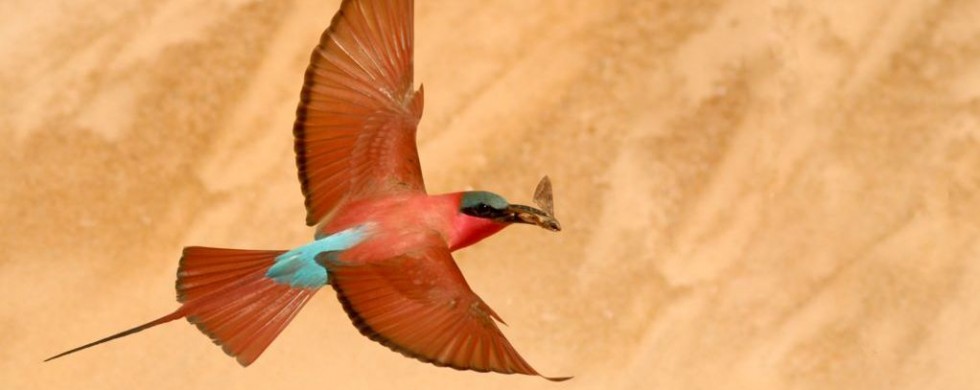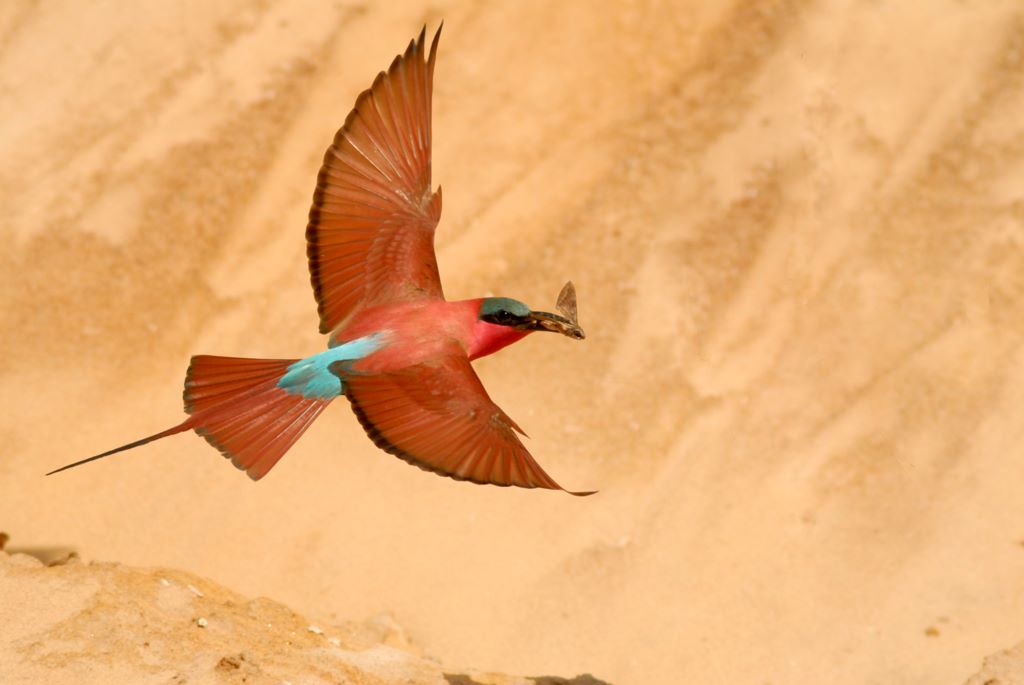
15
2008Hey, Carmine! – November 2008
Shot of the Month – November 2008
This month I highlight a stunner of the bird world – the Carmine Bee-eater. I love the name, and find that I cannot say it without applying a poor imitation of a Brooklyn accent (think Rocky, and replace “Adrian” with “Carmine”).
Of course, those of you with a more refined education already know that “carmine” is by definition “A strong to vivid red,” or “A crimson pigment derived from cochineal.” ( I didn’t know….)
As you can see, it is an apt name for this scarlet fellow. Carmine Bee-eaters (CBEs) can be found in east and southern Africa though I have personally only ever seen them in Botswana and Zambia.
Most shots of the CBE on my site are from a safari I took in Zambia and most have this tan backdrop—it is sand. I found a vertical sandbank along a river that was riddled with row after row of holes, which can be up to 8 feet in depth I am told, that CBEs had dug to house their next brood of chicks. They must raise their chicks quickly while the river level is low—once the rains return the sandbank will be underwater.
Each day I would drive to this spot along the river and I would get out and spend at least an hour peering down from above watching the birds come and go. I shot hundreds and hundreds of images trying to capture these speedsters as they rocketed in and out of the sand bank. CBEs are exceptional flyers and routinely catch insects out of the air. It really is no contest. Once I saw a large moth make the fatal mistake of flying near a colony of nesting CBEs. A barrage of CBEs exploded out of the battery. The moth was dive-bombed relentlessly and it was lunch in a matter of seconds. The CBE in this photo has captured a plump insect and is returning home to feed the waiting chicks.
Carmine Bee-eaters are a stunning shade of red that is accentuated in sharp contrast by a metallic-green head and aqua-blue lower back. And if you catch them just right in the light, you can see that their wings are translucent.
At times dozens of CBEs burst from the side of the river simultaneously– a startling cacophony of movement and hue – an airborne crimson tide that the mind’s eye will not soon forget.
Until next month….:-)

